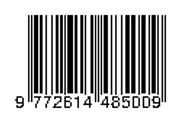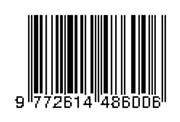Application of TOPSIS as a DSS in the Selection of Home Improvement Grant Recipients
DOI:
https://doi.org/10.26905/jeemecs.v6i2.10442Keywords:
Decision-making, ELECTRE, SAW, TOPSISAbstract
This study aims to compare the TOPSIS method with the SAW and ELECTRE methods which have been presented in previous research in making decisions on home improvement grant recipients. This research utilizes data and findings from prior studies concerning the selection process for recipients of home renovation assistance, employing the SAW and ELECTRE methodologies. Using the TOPSIS method obtained results that have significant differences. The TOPSIS method provides positive and negative ideal solutions, this is more detailed in supporting the decision-making process. By displaying the web-based TOPSIS method, it is hoped that users with an interest in decision-making can access it more easily. The results indicate that the positive ideal solution may symbolize an ideal housing state, such as a well-maintained house, while the negative ideal solution may represent a subpar housing condition.Downloads
References
A. Romadhona, Y. Permanasari, and D. Suhaedi, “Decision Support System for Selection of Recipients of Home Renovation Assistance Using the SAW and ELECTRE Methods,†Bandung Conf. Ser. Math., vol. 2, no. 2, pp. 130–140, 2022, doi: 10.29313/bcsm.v2i2.4842.
P. Setiaji, “Decision Support System With Simple Additive Weighting Method,†Simetris J. Tek. Mesin, Elektro dan Ilmu Komput., vol. 1, no. 1, p. 59, 2013, doi: 10.24176/simet.v1i1.117.
H. Faqih, “Implementation of DSS Using the Saw Method to Determine Priority for the Operation and Maintenance of the DPU Irrigation System in Tegal Regency,†IJNS - Indones. J. Netw. Secur., vol. II, no. 1, pp. 14–19, 2014.
H. Al Jufri, “MANUAL CALCULATIONS USING THE SAW (Simple Additive Weighting) METHOD,†J. Simasi J. Ilm. Sist. Inf., vol. 2, no. 1, pp. 59–68, 2022.
R. T. Subagio, M. T. Abdullah, and Jaenudin, “Application of the SAW (Simple Additive Weighting) Method in a Decision Support System for Determining Scholarship Recipients,†Pros. SAINTIKS FTIK UNIKOM, vol. 2, pp. 61–68, 2017.
U. Kasma, J. S. Informasi, and P. Berbobot, “Motorcycle Purchase Decision Support System Using the Simple Additive Weighting (SAW) Method,†e-Jurnal JUSITI (Jurnal Sist. Inf. dan Teknol. Informasi), vol. 7–2, no. 2, pp. 104–115, 2018, doi: 10.36774/jusiti.v7i2.245.
D. W. Wibowo, M. Mentari, A. D. Chandra, A. A. Kuddah, and R. W. Putra, “Web-Based Decision Support System Job Recommendations for JTI Polinema Graduates Using the SAW Method,†JASIEK (Jurnal Apl. Sains, Informasi, Elektron. dan Komputer), vol. 2, no. 1, 2020, doi: 10.26905/jasiek.v2i1.3724.
I. Irwhantoko and B. Basuki, “Carbon Emission Disclosure: Studies in Indonesian Manufacturing Companies,†J. Akunt. dan Keuang., vol. 18, no. 2, pp. 92–104, 2016, doi: 10.9744/jak.18.2.92-104.
D. Corry and Y. Indrianingsih, “Decision Support System for Admission of Informatics Engineering Student Association Members Using the Electre Method (Case Study: Adisutjipto College of Technology, Yogyakarta),†Compiler, vol. 3, no. 2, pp. 59–68, 2014, doi: 10.28989/compiler.v3i2.78.
M. Mahmudi, K. Kusrini, and H. Henderi, “Comparative Analysis of AHP and AHP-Electre Methods in Employee Selection (Case Study of PT. Gawih Jaya Banjarmasin),†Semin. Nas. Teknol. …, pp. 863–867, 2019, [Online]. Available: http://seminar-id.com/prosiding/index.php/sainteks/article/view/243%0Ahttp://seminar-id.com/prosiding/index.php/sainteks/article/viewFile/243/237.
R. M. Simanjorang, “Decision Support System for Selecting the Best Lecturer using the TOPSIS Method (Case Study: STMIK Pelita Nusantara Medan),†MEANS (Media Inf. Anal. dan Sist., vol. 4, no. 1, pp. 10–15, 2019, doi: 10.54367/means.v4i1.312.
B. F. A. Santoso and I. Susilawati, “the Decision Support System of Public Service Satisfaction Using Topsis Method At Regional I Bkn Yogyakarta,†J. Tek. Inform., vol. 2, no. 1, pp. 27–32, 2021, doi: 10.20884/1.jutif.2021.2.1.42.
H. Mustafidah and R. P. Mayasari, “Decision Support System Using the TOPSIS Method for Selection of Tutoring Institutions,†Sainteks, vol. 15, no. 1, pp. 39–53, 2019, [Online]. Available: http://jurnalnasional.ump.ac.id/index.php/SAINTEKS/article/view/6172.
F. R. Darmawan, E. L. Amalia, and U. D. Rosiani, “Application of the Topsis Method in Decision Support Systems for Cities Implementing Large-Scale Social Restrictions Caused by the Corona Outbreak,†J. Sist. dan Teknol. Inf., vol. 9, no. 2, p. 250, 2021, doi: 10.26418/justin.v9i2.43896.
Downloads
Published
Issue
Section
License
Our ethic statements are based on COPE’s Best Practice Guidelines for Journal Editors.
Publication decisions
The editor is responsible for deciding which of the articles submitted to the journal should be published.
The editor may be guided by the policies of the journal's editorial board and constrained by such legal requirements as shall then be in force regarding libel, copyright infringement and plagiarism. The editor may confer with other editors or reviewers in making this decision.
Fair play
An editor at any time evaluate manuscripts for their intellectual content without regard to race, gender, sexual orientation, religious belief, ethnic origin, citizenship, or political philosophy of the authors.
Confidentiality
The editor and any editorial staff must not disclose any information about a submitted manuscript to anyone other than the corresponding author, reviewers, potential reviewers, other editorial advisers, and the publisher, as appropriate.
Disclosure and conflicts of interest
Unpublished materials disclosed in a submitted manuscript must not be used in an editor's own research without the express written consent of the author.
Duties of Reviewers
Contribution to Editorial Decisions
Peer review assists the editor in making editorial decisions and through the editorial communications with the author may also assist the author in improving the paper.
Promptness
Any selected referee who feels unqualified to review the research reported in a manuscript or knows that its prompt review will be impossible should notify the editor and excuse himself from the review process.
Confidentiality
Any manuscripts received for review must be treated as confidential documents. They must not be shown to or discussed with others except as authorized by the editor.
Standards of Objectivity
Reviews should be conducted objectively. Personal criticism of the author is inappropriate. Referees should express their views clearly with supporting arguments.
Acknowledgement of Sources
Reviewers should identify relevant published work that has not been cited by the authors. Any statement that an observation, derivation, or argument had been previously reported should be accompanied by the relevant citation. A reviewer should also call to the editor's attention any substantial similarity or overlap between the manuscript under consideration and any other published paper of which they have personal knowledge.
Disclosure and Conflict of Interest
Privileged information or ideas obtained through peer review must be kept confidential and not used for personal advantage. Reviewers should not consider manuscripts in which they have conflicts of interest resulting from competitive, collaborative, or other relationships or connections with any of the authors, companies, or institutions connected to the papers.
Duties of Authors
Reporting standards
Authors of reports of original research should present an accurate account of the work performed as well as an objective discussion of its significance. Underlying data should be represented accurately in the paper. A paper should contain sufficient detail and references to permit others to replicate the work. Fraudulent or knowingly inaccurate statements constitute unethical behavior and are unacceptable.
Originality and Plagiarism
The authors should ensure that they have written entirely original works, and if the authors have used the work and/or words of others that this has been appropriately cited or quoted.
Multiple, Redundant or Concurrent Publication
An author should not in general publish manuscripts describing essentially the same research in more than one journal or primary publication. Submitting the same manuscript to more than one journal concurrently constitutes unethical publishing behaviour and is unacceptable.
Acknowledgement of Sources
Proper acknowledgment of the work of others must always be given. Authors should cite publications that have been influential in determining the nature of the reported work.
Authorship of the Paper
Authorship should be limited to those who have made a significant contribution to the conception, design, execution, or interpretation of the reported study. All those who have made significant contributions should be listed as co-authors. Where there are others who have participated in certain substantive aspects of the research project, they should be acknowledged or listed as contributors.
The corresponding author should ensure that all appropriate co-authors and no inappropriate co-authors are included on the paper, and that all co-authors have seen and approved the final version of the paper and have agreed to its submission for publication.
Disclosure and Conflicts of Interest
All authors should disclose in their manuscript any financial or other substantive conflict of interest that might be construed to influence the results or interpretation of their manuscript. All sources of financial support for the project should be disclosed.
Fundamental errors in published works
When an author discovers a significant error or inaccuracy in his/her own published work, it is the author’s obligation to promptly notify the journal editor or publisher and cooperate with the editor to retract or correct the paper.










